Lane Snapper
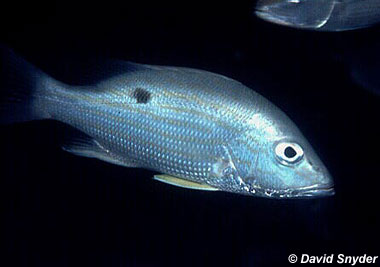
Lutjanus synagris
These almond-shaped reef fish usually find a favorite location and don’t stray far from it their entire lives. They’re pink-red on top, with yellow to red fins, and they have silvery bodies with pink to yellow lines running from end to end. Although they generally grow to about 14 inches long, they’ve been caught at 20 inches as well.
Order: Perciformes
Family: Lutjanidae
Genus: Lutjanus
Species: synagris
Common Names
English language common names include lane snapper, candy striper, rainbow snapper, bream, godbless, mexican snapper, moonlight grunt, pot snapper, redfish, redtailed snapper, snapper, spot snapper, and williacke. Other common names include areoco (Portuguese), argente (French), bermejuelo (Spanish), biajaiba (Spanish), chino (Spanish), coral largu (Papiamento), kisenfuedai (Japanese), luciano-riscado (Portuguese), lucjan smugowy (Polish), manchego (Spanish), mancheva (Spanish), paguette (French), pargo (Spanish), pargo biajaiba (Spanish), pargo guanapo (Spanish), pargo viajaiba (Spanish), rayado (Spanish), rouge (French), royac (French), sarde (French), vermelho-arioco (Portuguese), villajaiba (Spanish), vivaneau gazon (French), vivaneau raye (French), and yeux de boeuf (French).
Importance to Humans
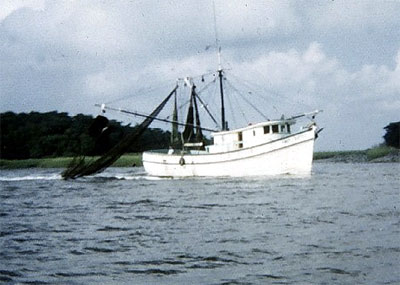
This fish is a popular sport and a high quality food fish. Lane snappers compose a large portion of the sport and commercial snapper fishery. They are caught with beach seines, boat seines, traps, handlines, and bottom trawls. Shrimp trawlers account for a large portion of the total fishing mortality on this snapper, as juveniles occur over soft bottom areas with high shrimp populations. Lane snapper also provide an important fishery off the coast of southern Cuba during the late spring and early summer months.
Ciguatera poisoning has been reported from eating this snapper. Ciguatera poisoning is caused by dinoflagellates (microalgae) on dead corals or other algae. Fish eat these dinoflagellates, and the snapper then feeds on those fish. The dinoflagellates have a toxin that builds up in the fish’s liver, and if it reaches a certain level, it can cause poisoning to humans who eat the snapper. Poisoned people report having gastrointestinal problems for up to several days, and a general weakness in their arms and legs. It is very rare to be afflicted with ciguatera poisoning.
Conservation
The lane snapper is not listed as endangered or vulnerable with the World Conservation Union (IUCN). The IUCN is a global union of states, governmental agencies, and non-governmental organizations in a partnership that assesses the conservation status of species.
> Check the status of the lane snapper at the IUCN website.
Geographical Distribution

The lane snapper is found in the western Atlantic Ocean, from North Carolina to southern Brazil. It is most abundant in the Antilles, off Panama, and the northern coast of South America. It also occurs in Bermuda and the Gulf of Mexico.
Habitat
Adult lane snappers live in a variety of habitats, but are most commonly observed over reefs and vegetated sandy bottoms in shallow inshore waters. This species has also been reported in offshore waters to depths of 1300 feet (400 meters). Once established, adult snappers remain in the same area for their entire lives. Lane snappers also occur in seagrass beds associated with shrimping areas. Juveniles live in protected inshore areas.
Biology
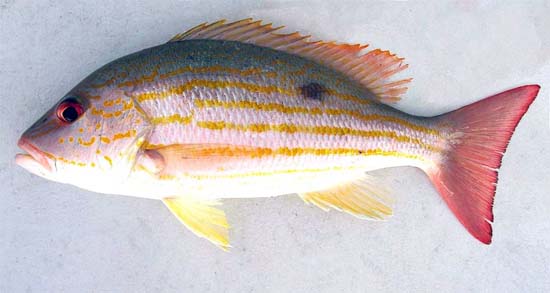
Distinctive Features
The lane snapper has a fairly deep body with a pointed snout. It has a double dorsal fin, with a rounded anal fin and relatively short pectoral fins. The caudal fin is emarginate to slightly forked.
Similar species occurring in the same areas as the lane snapper include the mahogany snapper (L. mahogoni) and the mutton snapper (L. analis). The mahogony snapper has a dark lateral spot that is ¼ to ½ below the lateral line in contrast to the lane snapper in which the spot extends less than ¼ below this line. The mahogony snapper also has a much larger eye. The mutton snapper has 2 oblique blue stripes on the snout and cheek and the back, sides, and upper caudal fin lobe is olive green in color.
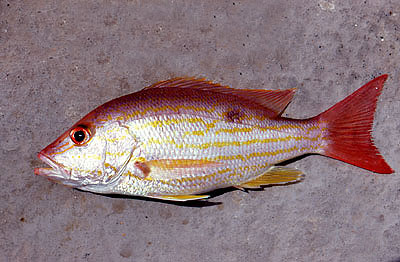
Coloration
Lane snapper have two color phases. The deep-water phase coloration is darker and more pronounced than those with the shallow-water resting phase coloration. Both color phases have pink to red upper sides and backs with a green tinge. The lower sides and belly are silver with a yellow tinge. The head has 3 or 4 yellow stripes running from the snout to the eye, the lower jaw projects slightly. There are eight to ten yellow to pink horizontal stripes on their sides, and three or four stripes below their anterior dorsal ray. There is a diffuse black spot below the soft portion of the dorsal fin. All fins are yellow to red.
Dentition
There is a narrow band of villiform teeth in each jaw, the upper jaw also bearing four canine teeth, two of which are enlarged. The tooth patch is anchor-shaped on the roof of the mouth.
Size, Age, and Growth
Lane snappers have an average length of 14 inches (36 cm), with a maximum length of 20 inches (50 cm). They usually weigh less than a pound. Sexual maturity is reached at lengths of 3-9 inches (10-23 cm). The estimated maximum age of the lane snapper is 10 years.
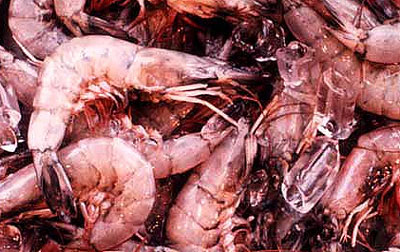
Food Habits
Because the lane snapper lives in a wide range of habitats, they are opportunistic predators, feeding on a variety of prey. Lane snappers feed nocturnally on smaller fishes, shrimp, cephalopods, gastropods, and crabs.
Reproduction
Spawning occurs throughout the spring and summer, dependent upon location. In Cuba, spawning occurs from March through September with peaks in July and August, while in Puerto Rico spawning peaks in May. The snappers aggregate offshore during these spawning events. The pelagic eggs are released into open waters and are transported by the ocean currents. After being released and fertilized, the eggs hatch within 23 hours. Although little is known about the larvae, they are planktonic at lengths less than 10 mm. They eventually settle on suitable habitat that offers some protection from predators.
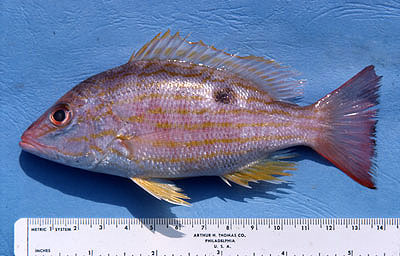
Juveniles are pale upon settlement, with red-tinged dorsal fins and yellow-tinged pelvic fins and pale bands on the body. They also have a dorsolateral spot.Predators
Predators of the lane snapper include sharks and other large predatory fishes, including other species of snappers.
Taxonomy
Carl Linnaeus first described Lutjanus synagris in 1758. Synonyms include Sparus vermicularis (Bloch and Schneider, 1801), Lutjanus aubrieti (Desmarest, 1823), Mesoprion uninotatus (Cuvier, 1828), Lutjanus brachypterus (Cope, 1871), and Neomaenis megalophthalmus (Evermann & Marsh 1900).
Prepared by: Rebecca Murray and Cathleen Bester